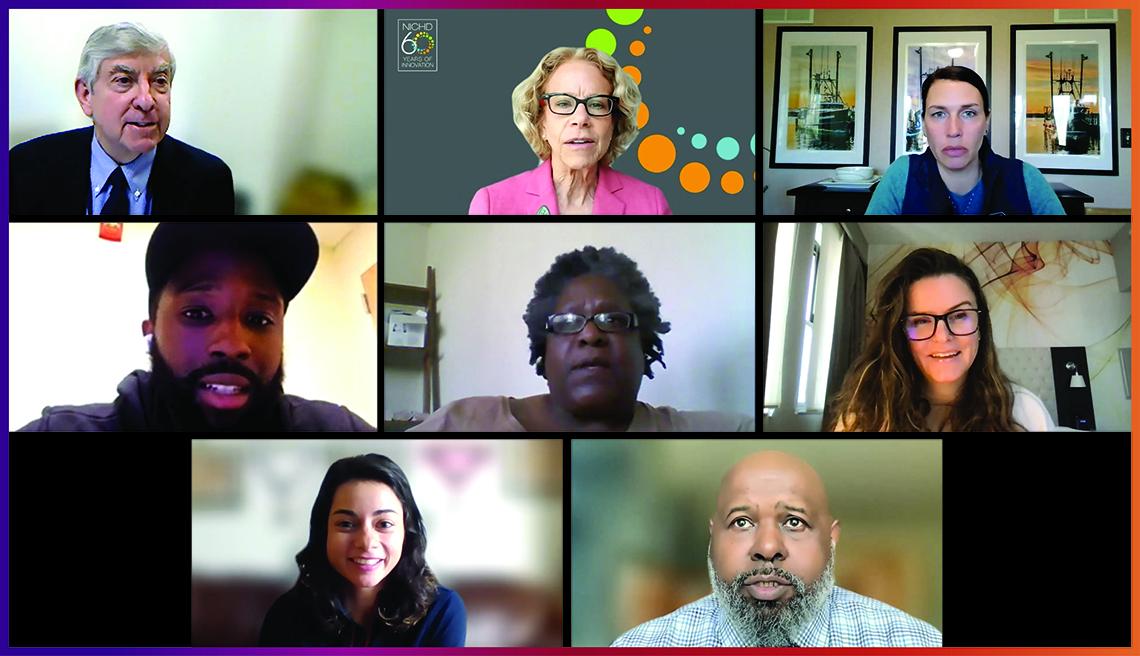Meeting the Moment
HEAL Hosts Third Annual Investigators Gathering

“All Americans deserve access to timely and effective treatments and services.”
DHHS assistant secretary for health Dr. Rachel L. Levine recently opened the third annual meeting of NIH’s Helping to End Addiction Long-term initiative (HEAL) with those words about the millions of Americans who deal with pain and addiction.
HEAL director Dr. Rebecca Baker welcomed more than 400 members of the initiative’s research community to the meeting who came together virtually to share the latest advances toward ending addiction long-term—HEAL’s vision.
Against the backdrop of record-breaking numbers of overdose deaths nationwide, HEAL investigators discussed person-centered strategies, community-based approaches and the ingenuity of the scientific community responding to the rapidly evolving crisis made worse by Covid-19 and shifting patterns in drug use.
The landscape has changed dramatically from a crisis driven by prescription opioid misuse to one now flooded with potent synthetic drugs like fentanyl, recounted NIDA director Dr. Nora Volkow. She presented disturbing trends of polysubstance use and rising overdose rates among teens, young adults and underserved populations.
A highlight of the meeting was a conversation with the HEAL community partner committee, people with lived experience who advise HEAL. The importance of peer recovery support and trust was underlined by committee member Kevin Charles, certified peer specialist and recovery coach with Family and Medical Counseling, Inc., in Washington, D.C. “People don’t care how much you know until they know how much you care,” he said.
Plenary sessions and scientific symposia showcased the broad scope of HEAL research. Scientists highlighted current efforts to integrate treatments for opioid use disorder, diverse types of pain and psychological distress into existing health care systems.
Digital tools were unveiled to enhance data sharing, collaboration and patient and provider shared decision-making. Screening efforts for polysubstance use throughout various health care system touch points were emphasized, as was the need for medications that can target multiple health conditions.
Included among breakthroughs were new therapeutic targets pinpointing stress hormones to treat pain; advances in treatments for pain that don’t rely on opioids such as neurostimulation; more user-friendly medications for opioid use disorder, like once-weekly oral formulation of methadone; and research to identify biomarkers to inform personalized pain care.
“Interdisciplinary research like HEAL is how things get done in the 21st century,” noted Dr. Rahul Gupta, director of the White House Office of National Drug Control Policy, during a virtual fireside chat with NIH acting director Dr. Lawrence Tabak. The two discussed placing people at the center of the government’s work, and the need for leveraging real-time “big data” to document and track non-fatal overdoses and illicit substance use within and across communities.
A roundtable discussion with leaders of federal agencies—Dr. Robert Califf of the Food and Drug Administration, Dr. Debra Houry of the Centers for Disease Control and Prevention and Dr. Miriam Delphin-Rittmon of the Substance Abuse and Mental Health Services Administration—focused on how NIH research can provide scientific evidence to drive policy and inform government efforts to better save lives.
Together, the robust body of research presented at this year’s meeting matched the magnitude of the crisis of opioid misuse, overdose and poorly treated pain. The all-hands-on deck effort underway through the NIH HEAL initiative is making progress joining the power of research and the strength of communities.
View the meeting agenda and archived recording at https://heal.nih.gov/news/events. For more information about HEAL, visit https://heal.nih.gov/.
